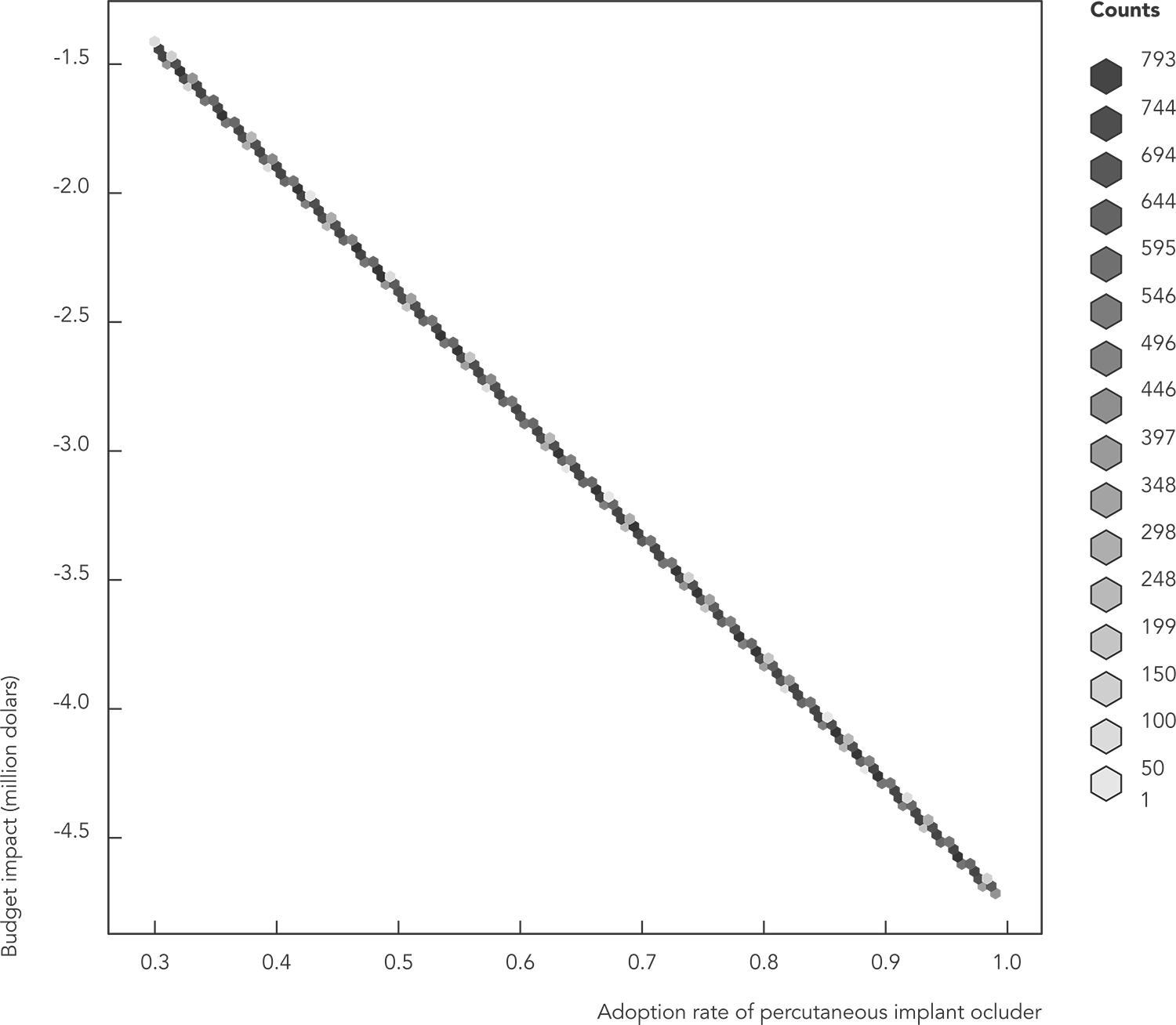The aim of this study was to perform a budget impact analysis on the adoption of percutaneous occlusion of ostium secundum atrial septal defects in the Brazilian Unified National Health System. Costs were collected using micro-costing technique from medical records for each treatment technique (conventional surgery versus percutaneous septal occluder) at a public federal hospital specialized in high-complexity cardiology. The analysis showed that expenditures associated with percutaneous occlusion were lower than with conventional surgery, and sensitivity analysis confirmed the cost reduction in several scenarios, showing a significant budget impact with a 30% adoption rate for the percutaneous occluder (savings of approximately 1.5 million dollars per year). The study indicates that the adoption of the percutaneous septal occluder would mean cost savings of approximately 3.5 million dollars for the Brazilian public health system.
Heart Septal Defects; Septal Occluder Device; Biomedical Technology; Thoracic Surgery; Health Evaluation


